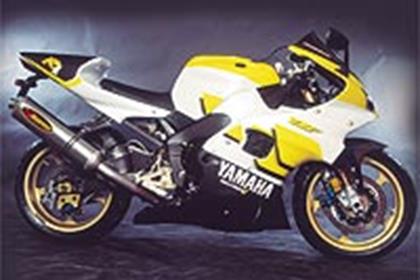Semi-automatic for the people
THEY’RE used in World Superbikes and Formula One racing cars, and your road bike could have one in a few years. What are they? Semi-automatic gearboxes, that’s what.
We know that Ducati will be using such a transmission system in its next 996, which will probably appear at the Milan Show in 2001. What we don’t know yet is exactly what Ducati means by semi-automatic transmission – but we can make an intelligent guess.
What the bike won’t have is a fluid-filled torque converter, as found on automatic and semi-automatic cars. This is far too heavy for a high-performance superbike and it absorbs too much power. The clutch itself will be a standard multiplate unit, similar in principle to those we’re used to today. So what part of the gearchanging process will be automated?
Ducati’s primary aim will be for faster gearchanging than you can get manually, and to achieve this it will most likely follow racing car designs and use a push-button gearchange. Nail the throttle, howl up the rev range and just when you want to change up, press a button on the left handlebar and the bike will instantly switch to the next gear. Approach a corner with the front tyre howling, back skimming the track, and change down by simply pressing a second button. The clutch will disengage briefly, the engine will rev and the box will seamlessly slip down a ratio.
There are various options within this scenario. On up-changes, the clutch won’t be operated at all. Kits are already available for race and road bikes which momentarily kill the ignition when the gear lever starts to move, so the power being transmitted through the gearbox is momentarily interrupted and the next ratio slips into place easily. On the new Ducati, the only addition to this will be a solenoid which also moves the gear lever for you. So press the up-change button and simultaneously a solenoid will turn the gear selection drum while the ignition will be killed for a fraction of a second, and the bike will be in the next gear faster than you could ever pull in the clutch lever manually. It might save a 20th of a second each time, which doesn’t sound like much, but on some circuits that’s a second a lap if you’re changing up 20 times.
Quite possibly, Ducati will leave it at this, so you’ll still need to make downchanges in the conventional fashion. But some sources are suggesting the new bike will have no gear lever at all, which means downchanges, too, will be by push-button. This is more complicated, because the clutch has to be disengaged and the throttle blipped to prevent the back wheel skipping or locking up. It is achievable – a second solenoid can disengage the clutch, while a third can blip the throttle, and they’ll be fine-tuned to do so by carefully
pre-set amounts, all controlled by a bigger version of the engine management computer. But this will add weight and complication Ducati might be keen to avoid.
A further sophistication which is perfectly achievable is for the up-changes to be fully automatic – the rider won’t even have to push a button.
When a certain amount of revs are reached, a computer will effectively ” push ” the upchange button and the bike will instantly be in the next gear, at exactly the right pre-determined revs for maximum performance. But both racers and road riders will probably protest at having this much control taken away from them, and the additional complication means this is less likely than the rider-operated push-button up-change.
None of this is surprising, as the technology is tried, tested and readily available. What is surprising is that it hasn’t been done already.


